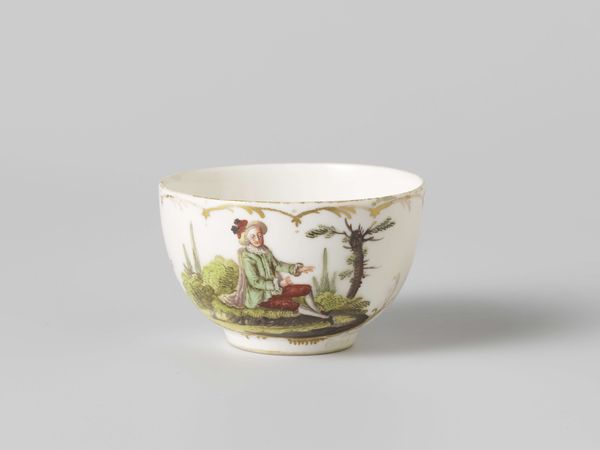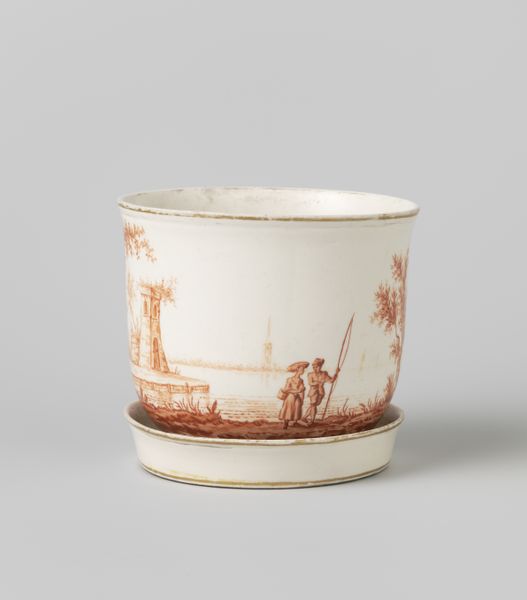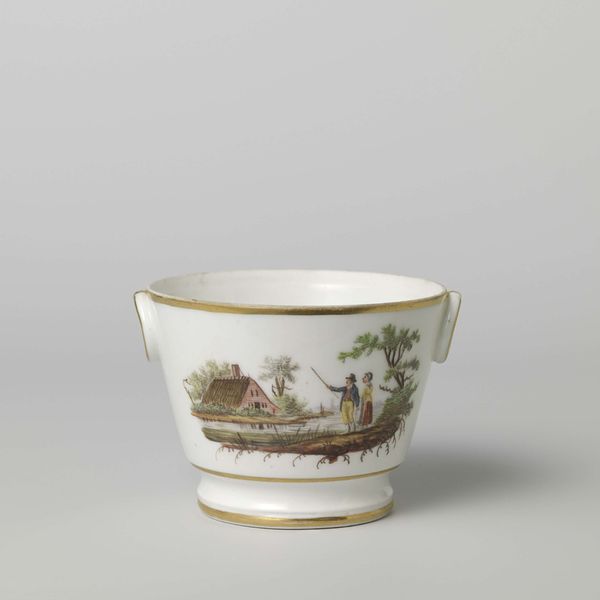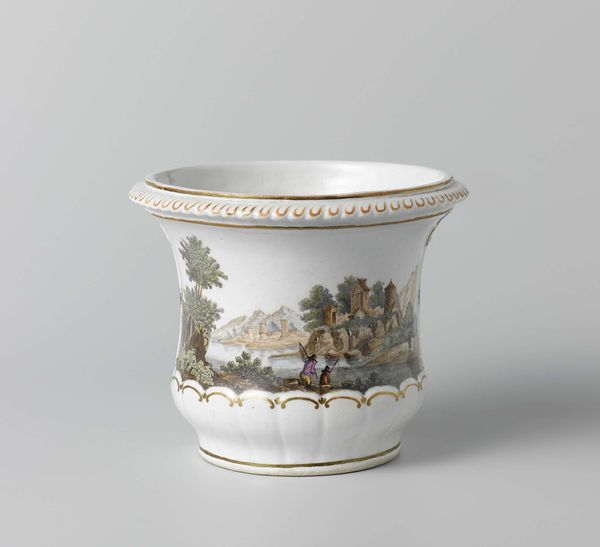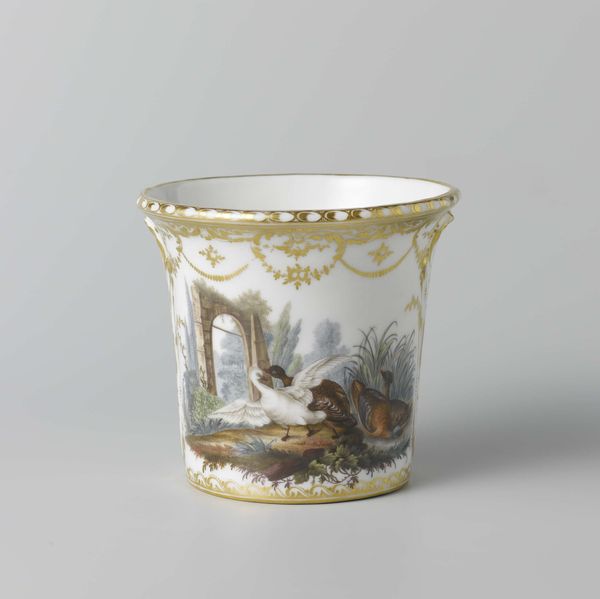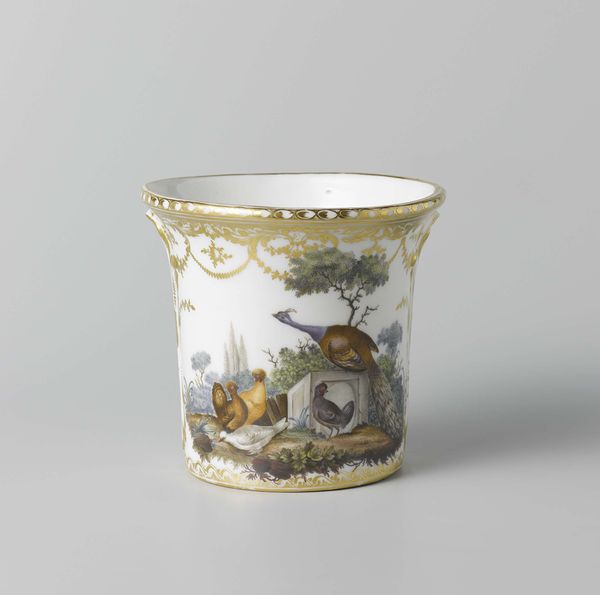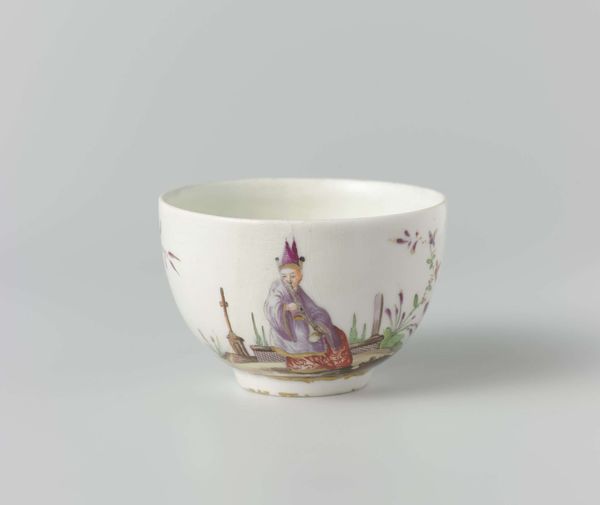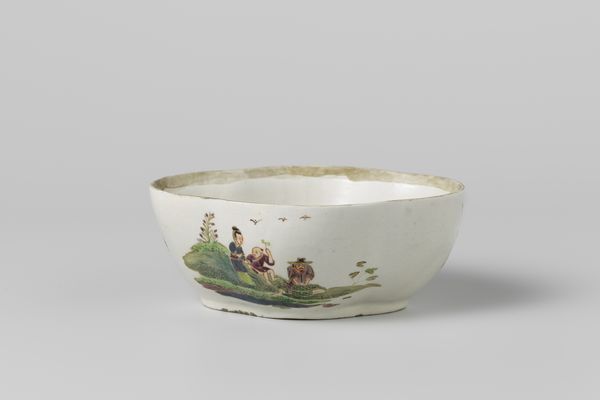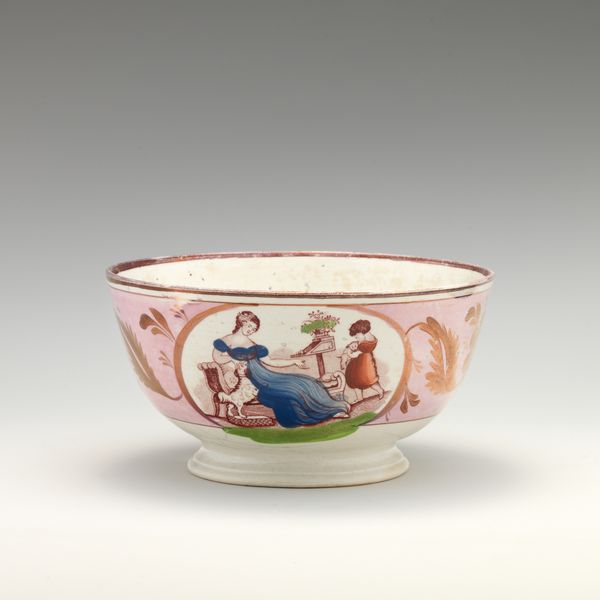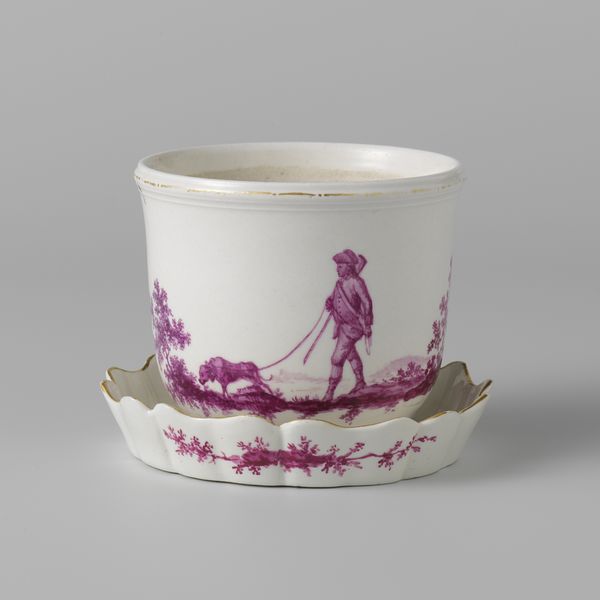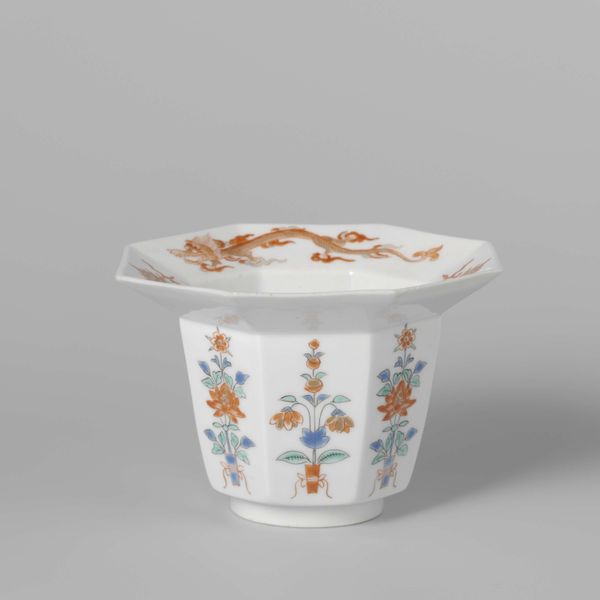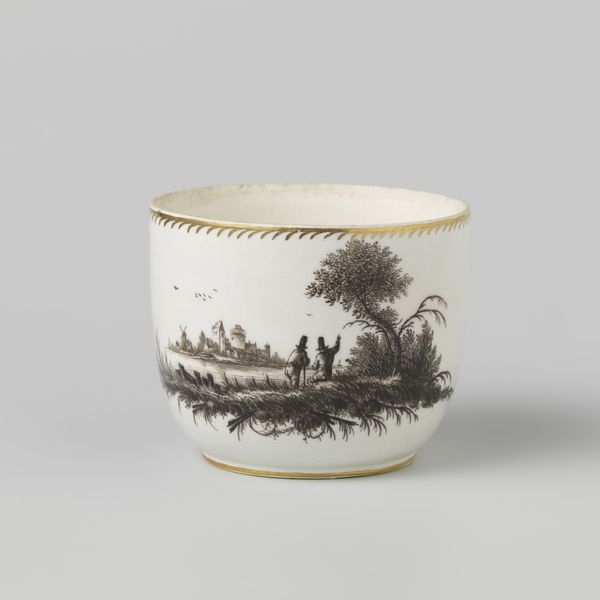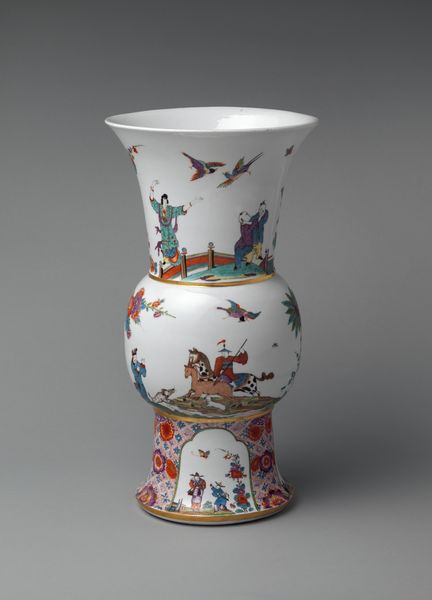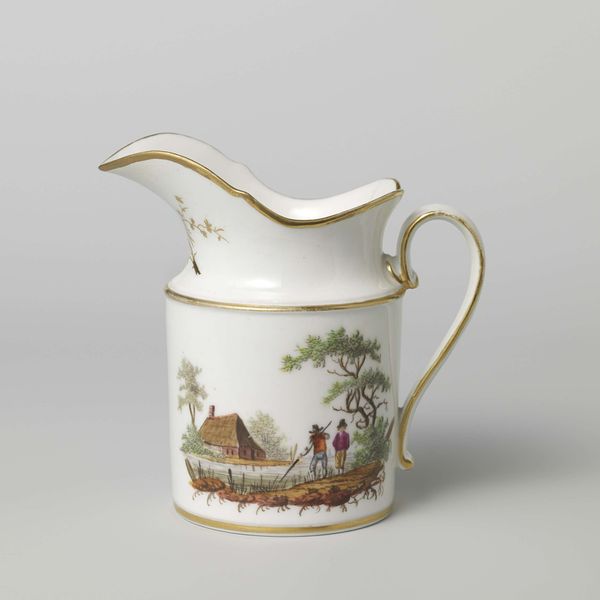
ceramic, porcelain, sculpture
#
ceramic
#
porcelain
#
food illustration
#
sculpture
#
ceramic
#
genre-painting
#
decorative-art
#
italian-renaissance
Dimensions: Overall, irregular diameter (confirmed): H. 6 3/8 x W. 6 x D. 5 5/8 in. (16.2 x 15.2 x 14.3 cm)
Copyright: Public Domain
Curator: Look at this, won’t you? It’s an exquisite porcelain jar, dating back to between 1745 and 1760. The Capodimonte Porcelain Manufactory created it. Editor: My first impression? Elegant, definitely, but something about those pointy hats and stark white costumes is slightly… unsettling. Curator: Indeed. It's more than just decorative art; it’s like a playful genre painting brought to life in ceramic. The figures seem to be lifted straight out of a Commedia dell'Arte performance. Notice the characters—one riding a donkey, another with a trumpet. They are pure theatrical whimsy. Editor: Knowing the context of the Commedia dell'Arte is essential here. While it looks quaint on the surface, this traveling theatre was often deeply subversive, using stock characters to critique power structures, class divisions and social norms. Who knows what they are playing, in their conical white caps! Curator: It's interesting that you frame it that way. The use of porcelain suggests a refinement and aristocracy disconnected from these characters' true social roots as voices of resistance, though they may critique it satirically. Editor: Precisely. The jar then becomes a potent symbol. Is it celebrating the performance, or is it appropriating and taming those voices for the elite's viewing pleasure? The location within the Met reminds us how elite such work is and feels removed from any social message Curator: Or perhaps, a clever, knowing commentary from the artisan, subtly encoded within the very decoration, acknowledging the paradox! Its creation during the Italian Renaissance pulls threads of both reverence for art and humanistic insight. A jar that invites one to dream of carnivals past. Editor: And carnivals of the present. These historical forms continue to provide critical frameworks, so in a way, it brings history vividly alive in the moment. We're left pondering: Whose stories get told, and through whose hands are they crafted and celebrated. Curator: And to imagine what delights this vessel may have once held. That contrast makes this little jar truly a thing of mystery, inviting dialogue across eras and beliefs. Editor: It encourages conversations, challenging simple aesthetic appreciation, leading us towards awareness. Now, that is good design!
Comments
No comments
Be the first to comment and join the conversation on the ultimate creative platform.
